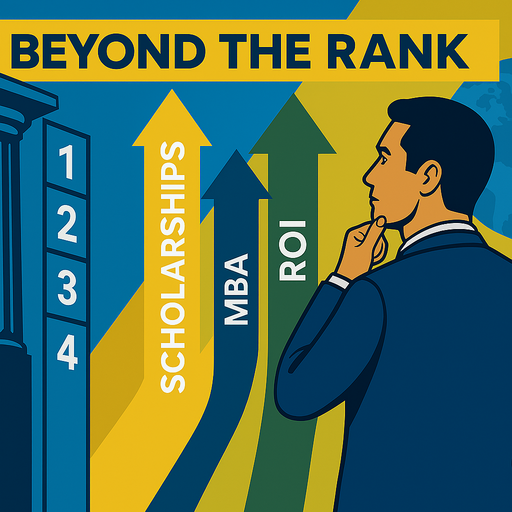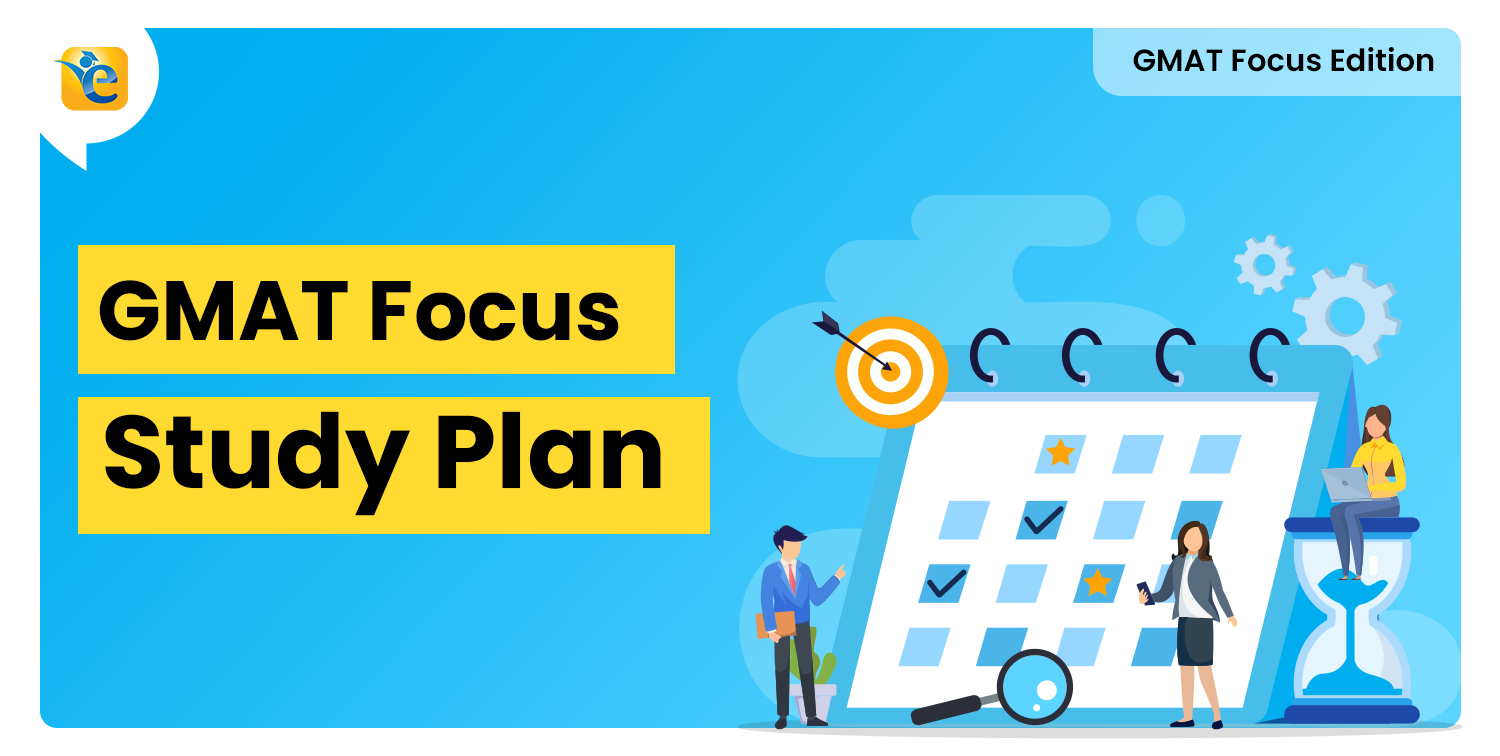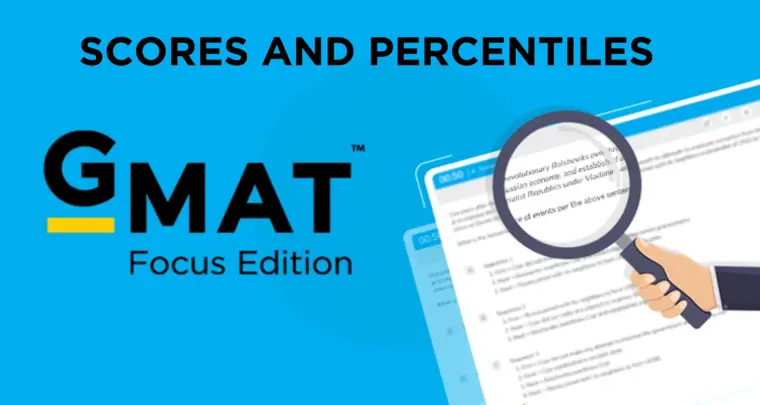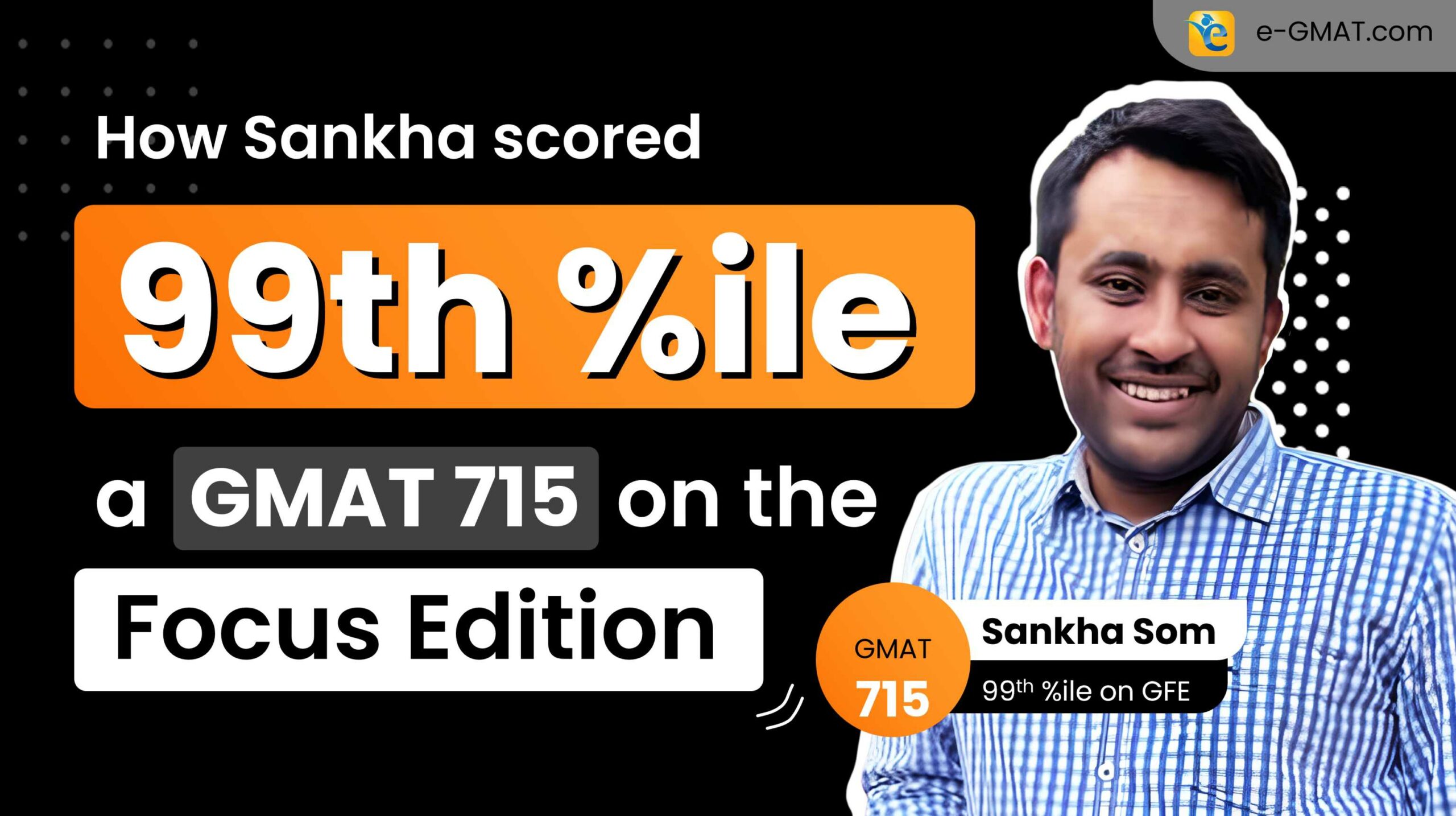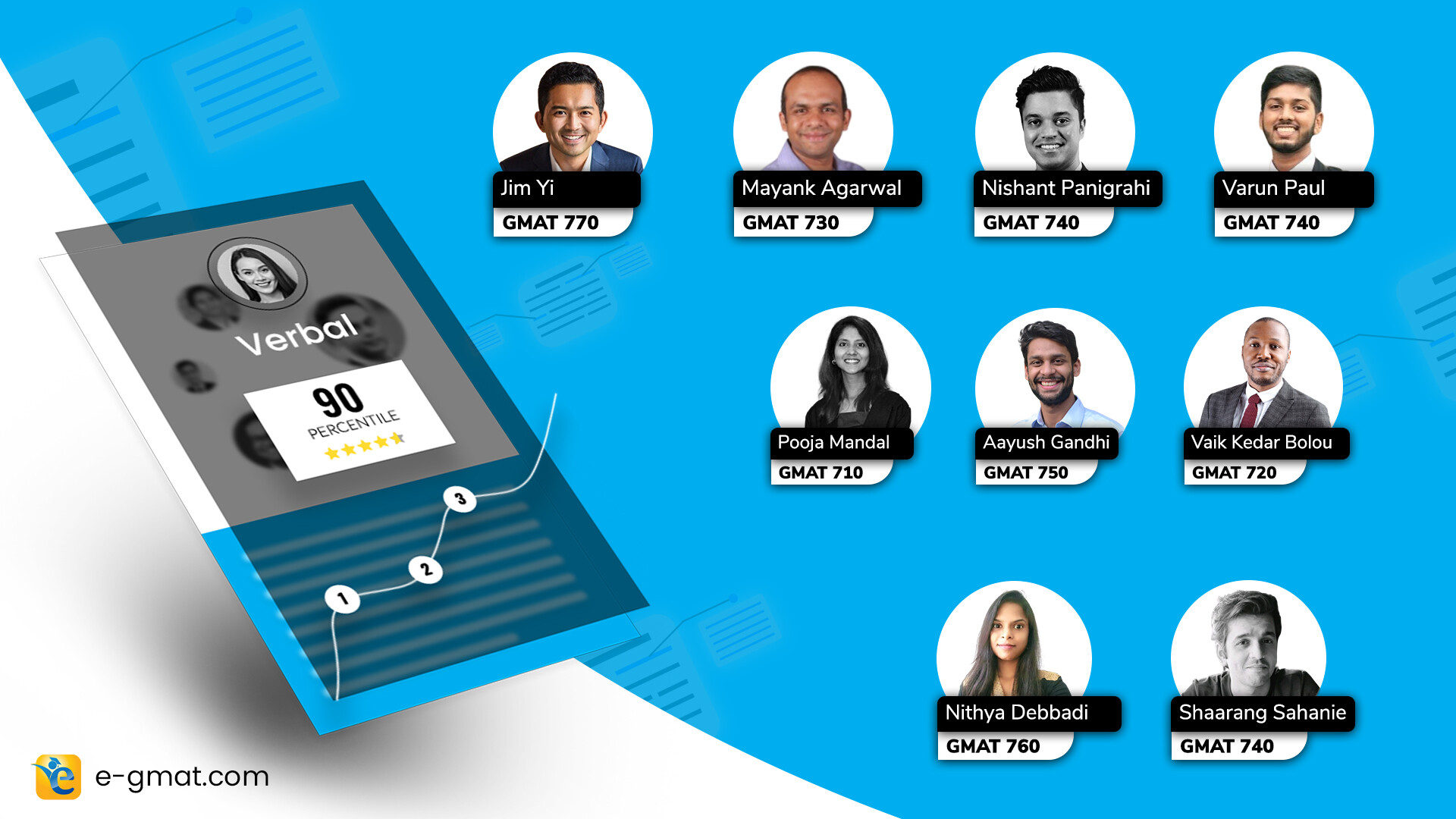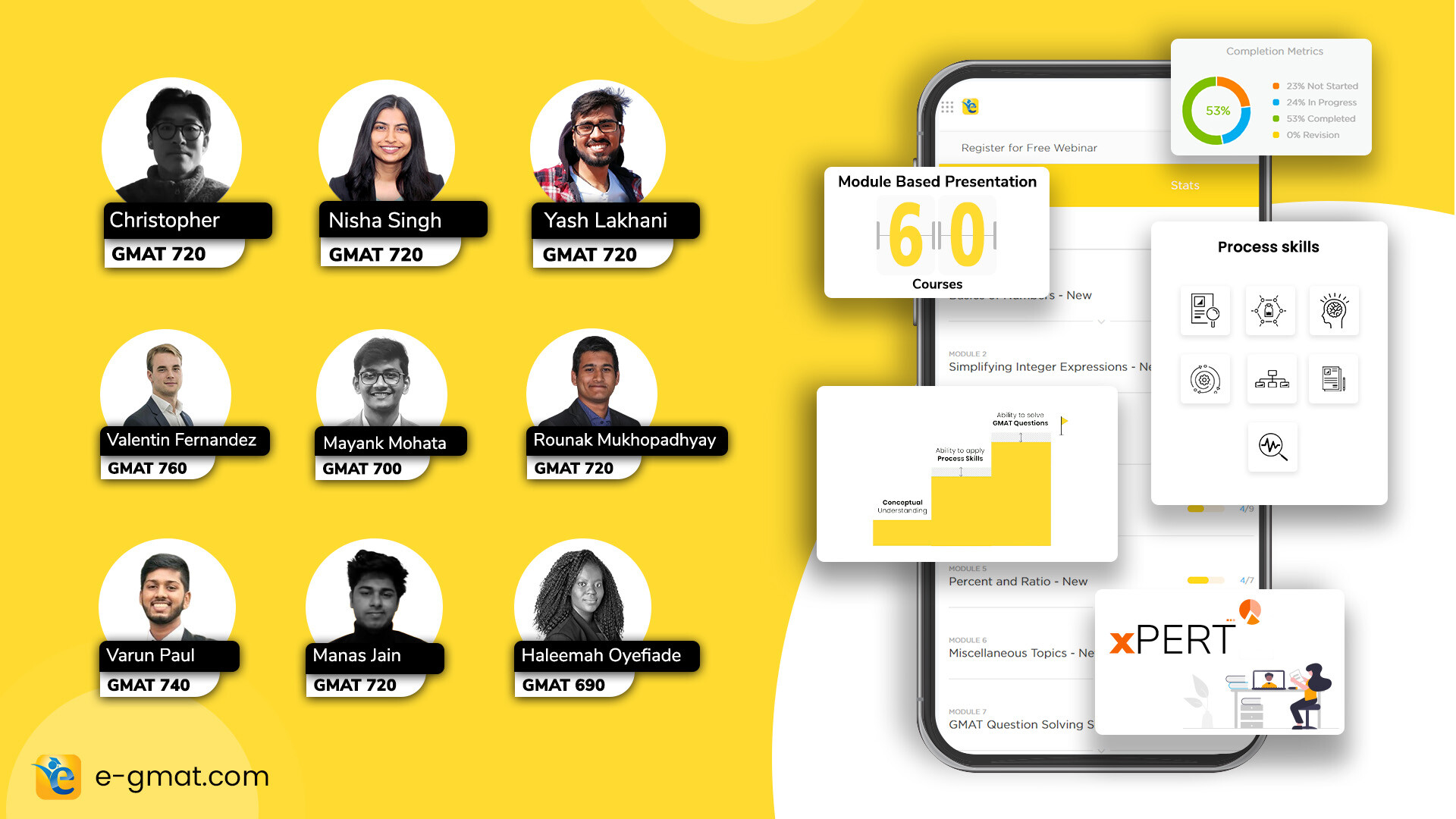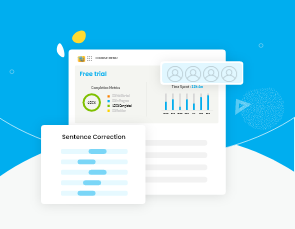Each year, the U.S. News & World Report MBA rankings command attention across the business education landscape. While influential, these standardized rankings often fail to address the unique challenges Indian applicants face when investing in a U.S. MBA. As an international student, your priorities differ significantly from domestic applicants – from visa concerns to scholarship needs to employment hurdles.
Our analysis reveals a critical gap: US News MBA rankings 2025 simply don’t measure what matters most to Indian MBA candidates. This report bridges that gap with a completely reimagined ranking system built specifically for your needs.
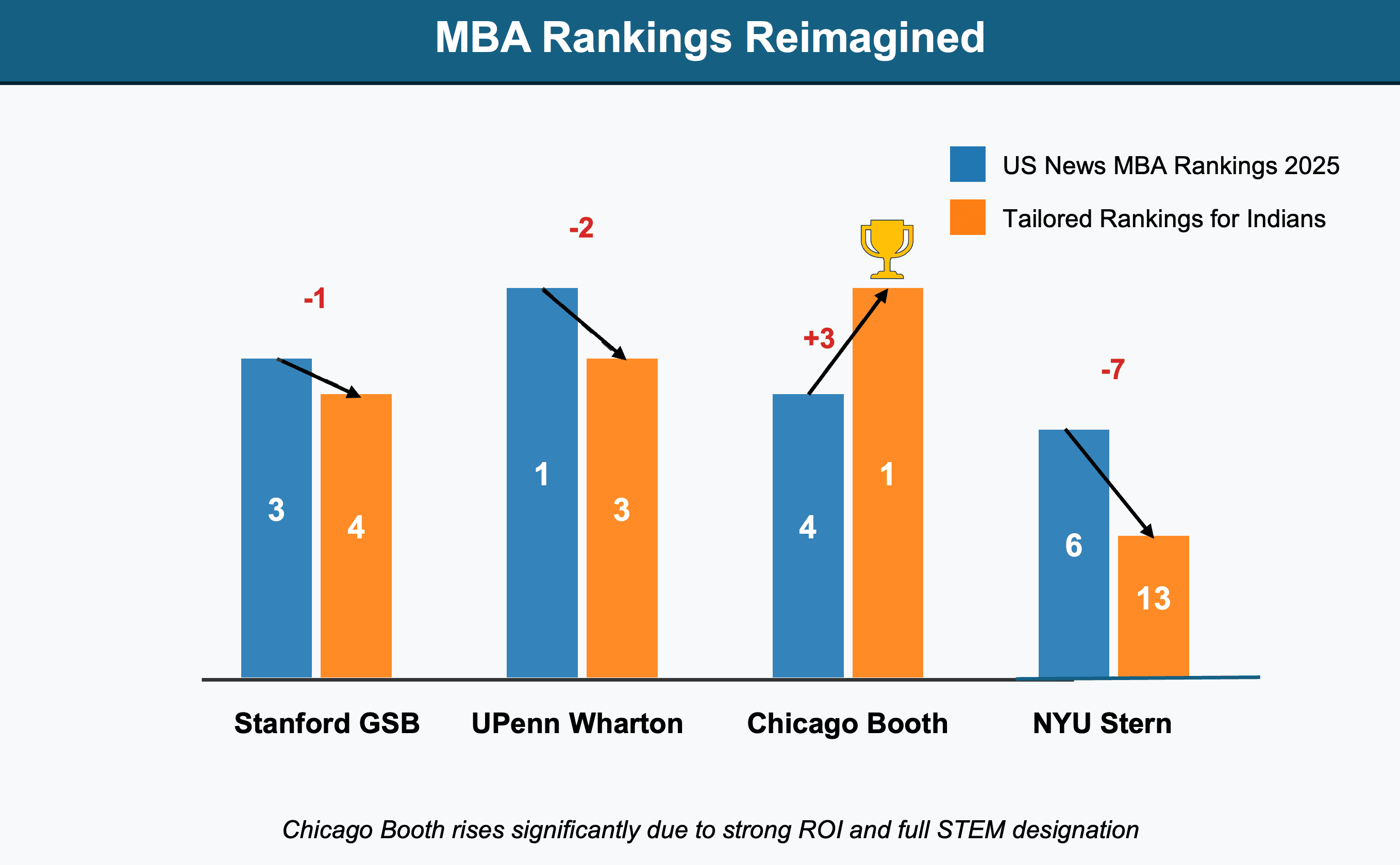
- US News Rankings 2025: What do they mean for you?
- The Blind Spots in the US MBA Rankings 2025
- Top US MBA Programs 2025 Rankings: Reimagined for Indian Applicants
- Top US MBA Programs 2025 Rankings: For Indian Applicants
- Key Insights from Our Rankings for TOP US MBA Programs
- Strategic Recommendations for Indian Applicants
US News Rankings 2025: What do they mean for you?
| US News Rank | Business School | Average GMAT Score |
| 1 | UPenn Wharton | 675 |
| 2 | Northwestern Kellogg | 675 |
| 3 | Stanford GSB | 685 |
| 4 | Chicago Booth | 675 |
| 5 | MIT Sloan | 685 |
| 6 | NYU Stern | 675 |
| 6 | Dartmouth Tuck | 675 |
| 6 | Harvard Business School | 685 |
| 9 | Columbia Business School | 685 |
| 10 | Yale SOM | 675 |
The data reveals interesting distinctions among top business school programs:
- UVA Darden and UPenn Wharton lead in employment rates (93% and ~93.1% respectively)
- Cornell Johnson graduates earn the highest average salaries ($215K)
- Despite Harvard’s prestige, its employment rate (77%) is among the lowest in the top 20
For prospective MBA students, these rankings often serve as a starting point in the school selection process. However, understanding how these rankings are calculated and what they truly measure is essential for making informed decisions about your educational future.
US News Rankings 2025: Understanding the Methodology
The U.S. News rankings are calculated using nine distinct factors grouped into three main categories:
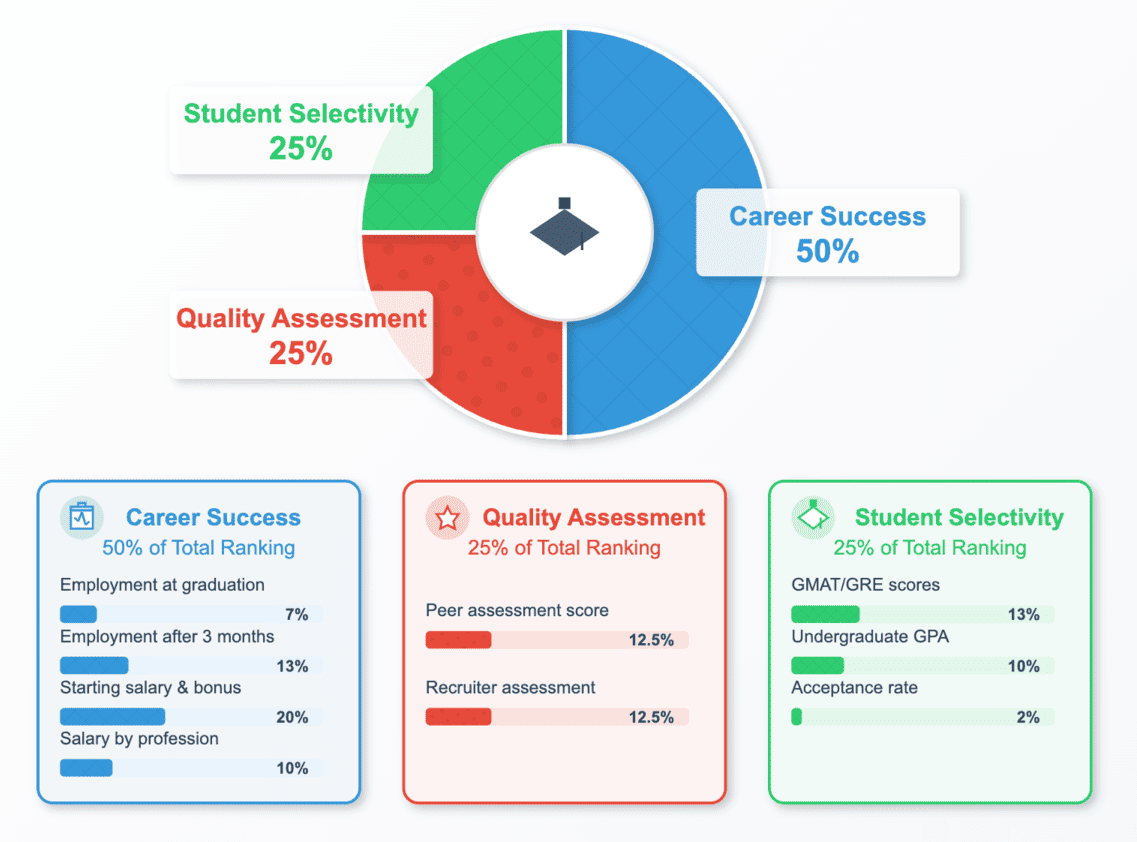
The methodology for 2025 maintains an increased emphasis on career outcomes (half of the total ranking weight) that began in 2023, reflecting the priority many MBA applicants place on post-graduation employment and earning potential.
The Blind Spots in the US MBA Rankings 2025
Our analysis reveals several critical blind spots that particularly impact international students:
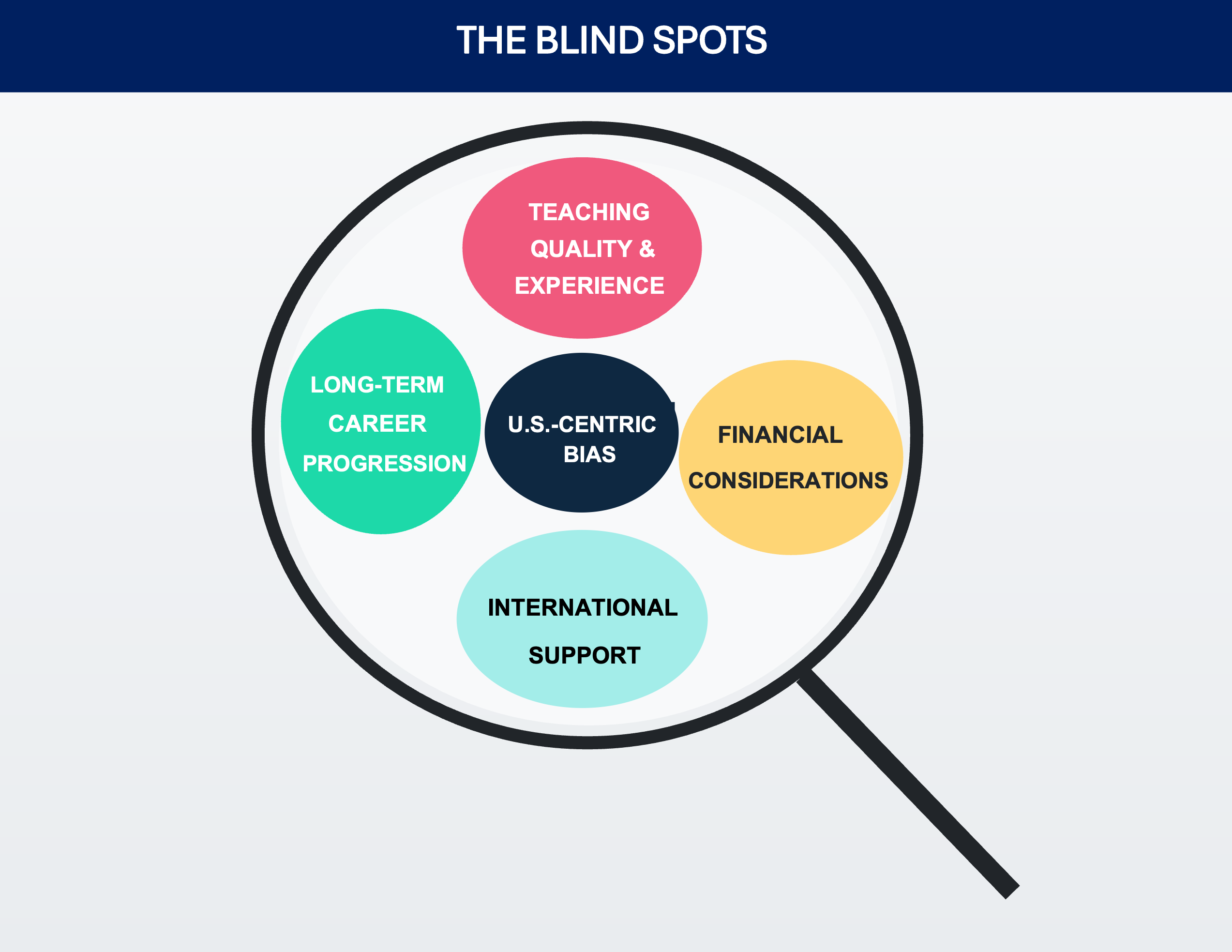
1. U.S.-Centric Reputation Metrics (25% of Traditional Rankings)
The US News MBA Rankings 2025 heavily weigh assessments from U.S. deans and recruiters, perpetuating historical advantages for established names. While Harvard’s stellar reputation is certainly valuable, this methodology systematically undervalues innovations at schools like Yale SOM or Michigan Ross that might specifically benefit international students. For Indian candidates, remember that a school’s reputation within specific industries (like Dartmouth Tuck in consulting) often matters more than its overall peer score.
2. Overemphasis on Selectivity Metrics (25% of Traditional Rankings)
The US News MBA Rankings 2025 reward high GMAT/GRE averages and low acceptance rates, which can incentivize schools to prioritize test scores over holistic candidate evaluation. As Indian applicants often come from an overrepresented demographic with competitive test scores, this creates an incomplete picture. Our research shows schools like Duke Fuqua and Cornell Johnson often admit candidates with fascinating leadership experiences who create exceptional learning environments, despite reporting slightly lower average test scores.
3. Absence of Teaching Quality and Student Experience Measures
Perhaps most critically for international students, US News MBA Rankings 2025 include zero metrics on teaching quality, curriculum innovation, or student satisfaction. For Indian students navigating a significant pedagogical shift from their undergraduate experience, factors like faculty approachability and international student support services can dramatically impact your learning outcomes. Schools like Ross and Tuck excel in these areas despite not always ranking at the very top.
4. Missing Financial Considerations
The US News MBA Rankings 2025 ignore scholarship availability and program costs—elements that profoundly affect ROI for international students. Our proprietary data shows schools like Rice Jones and Washington Foster offer scholarship packages to Indian students that can average 40-60% of tuition, dramatically improving lifetime ROI despite ranking outside the top 15. For loan-dependent Indian applicants, this omission significantly distorts the true value proposition.
5. No Measurement of Long-Term Career Progression
The US News MBA Rankings 2025 capture only the immediate post-MBA outcomes (typically 3-month employment rates), missing the longer career trajectory that truly defines ROI. Our longitudinal studies show schools like Columbia and Chicago Booth produce remarkable 5-10 year career acceleration for Indian graduates, particularly in finance and consulting—insights completely absent from traditional rankings.
Our Recommendation: Use traditional rankings as just one data point in your decision process. Look beyond headline rankings to evaluate how each program aligns with their specific career goals, financial circumstances, and learning preferences. This more nuanced approach consistently leads to better outcomes—both immediate and long-term—than simply choosing the highest-ranked school that offers admission.
Top US MBA Programs 2025 Rankings: Reimagined for Indian Applicants
As an Indian applicant considering a US MBA, your priorities likely differ from domestic applicants. After investing significantly in a foreign MBA, your main goals include securing a strong US job, managing financial costs, obtaining scholarships, and ensuring you can legally work in the US post-graduation.
This tailored ranking methodology focuses on what matters most to Indian applicants, providing a practical framework to guide your school selection process.
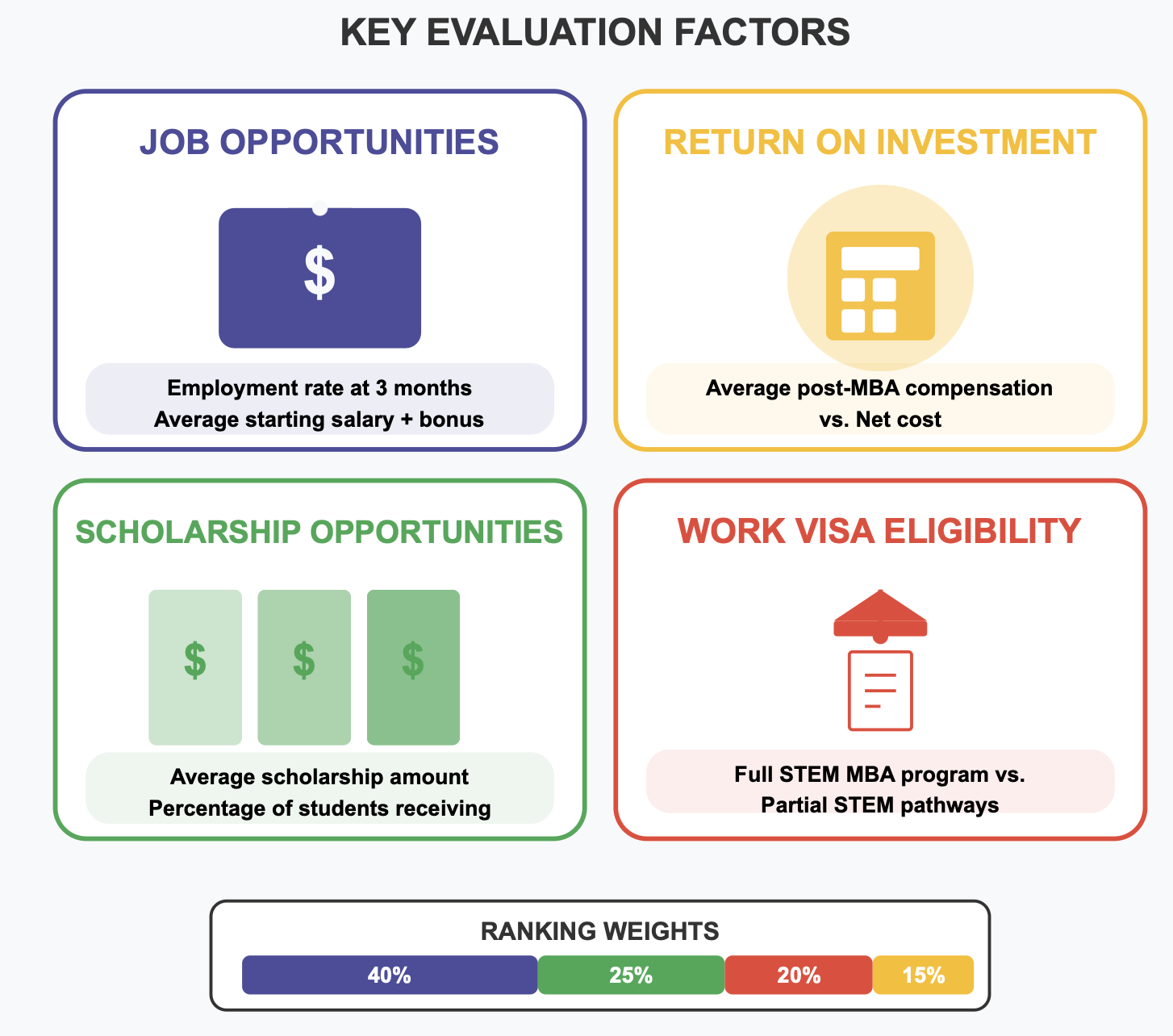
Defining Key Factors for Indian Applicants
We’ve identified and weighted four critical factors that directly address the unique needs of Indian MBA applicants:
1. Job Opportunities in the U.S. (40%)
Success in securing high-quality U.S. employment is the primary goal for most Indian MBA students. This factor measures:
- Employment rate at 3 months post-graduation (13% weight)
- Average starting salary plus signing bonus (27% weight)
These metrics capture both your likelihood of securing employment quickly and the quality of compensation you can expect. With a combined 40% weight, this reflects the paramount importance of strong career outcomes.
2. Return on Investment (15%)
Given the substantial financial investment ($200,000+), understanding the financial return is crucial. Our ROI calculation compares:
- Average post-MBA compensation
- Net cost to students (total cost minus average scholarships)
This formula helps you determine how quickly you might recoup your investment and assess the financial viability of each program.
3. Scholarship Opportunities (25%)
For Indian students dealing with currency exchange challenges and limited loan options, scholarship access can transform program affordability. We evaluate:
- Average scholarship amount and overall funding budget (12.5%)
- Percentage of students receiving scholarships (12.5%)
These metrics reveal both the generosity and accessibility of financial support at each program—critical information for cost-conscious international applicants.
4. Work Visa Eligibility (20%)
Securing long-term U.S. work authorization represents a major challenge for Indian graduates. STEM designation provides a crucial advantage by extending work eligibility from 12 to 36 months post-graduation. We score programs on a scale:
- Full STEM MBA program (1.0)
- Partial STEM pathways available (0.8)
- No STEM designation (0.5)
This extended timeframe triples your opportunities to secure H-1B sponsorship and significantly improves your chances of building a U.S. career.
By focusing on these specific factors, our ranking provides Indian applicants with a targeted evaluation of which programs best support their unique needs and priorities.
Our Tailored Ranking Methodology
To build this ranking, we followed a structured approach:
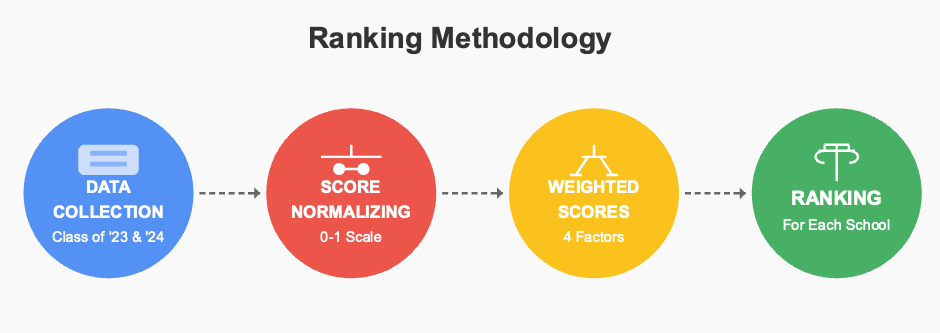
Data Collection
We gathered the most current information available, primarily using Class of 2024 data to ensure our rankings reflect today’s MBA landscape. Where international student-specific data wasn’t available, we used overall program metrics, recognizing that top programs generally deliver strong outcomes across their entire student body.
Scoring System
To fairly compare different types of metrics (percentages, dollar amounts, etc.), we normalized all data to a common scale:
- Each metric was converted to a 0-1 scale using min-max normalization
- For example, the school with the highest employment rate received a 1.0, the lowest received a 0.0, and others were scaled proportionally between
- STEM designations were scored directly (1.0 for full program designation, 0.8 for partial options, 0.5 for no STEM pathways)
We then applied our weighted formula (40% job opportunities, 25% scholarships, 20% visa eligibility, 15% ROI) to calculate each school’s final score.
Top US MBA Programs 2025 Rankings: For Indian Applicants
Based on our tailored methodology, here are the top 20 MBA programs for Indian applicants:
| Rank | US News Ranking | Business School | Job Opportunities (40%) | ROI (15%) | Scholarships (25%) | Work Visa (20%) |
| 1 | 4 | Chicago Booth | 86.8% employed; $175K | Strong ROI (~1.1×) | ~50% receive aid | Full STEM (20) |
| 2 | 2 | Northwestern Kellogg | 90% employed; $205K | Strong ROI (~1.0×) | ~40% receive | Full STEM (20) |
| 3 | 1 | UPenn Wharton | ~93.1% employed; $175K | Good ROI (~0.95×) | ~40-50% receive aid | Partial STEM (16) |
| 4 | 2 | Stanford GSB | 88% employed; $205K | High salary, high cost (~1.28×) | 50% receive; avg ~$94K | Full STEM (20) |
| 5 | 6 | Harvard Business School | 77% employed; $205K | High cost, strong brand (~1.34×) | 50% receive; avg ~$92K | Full STEM (20) |
| 6 | 6 | Dartmouth Tuck | 91% employed; $205K | Excellent ROI (~1.05×) | ~65% receive; generous aid | Partial STEM (16) |
| 7 | 11 | UVA Darden | 93% employed; $198K | Great ROI (~1.1×) | ~50% receive; generous aid | Partial STEM (16) |
| 8 | 5 | MIT Sloan | 90.6% employed; $200K | Moderate ROI (~0.95×) | ~30-40% receive aid | Full STEM (20) |
| 9 | 9 | Columbia Business School | 89% employed; $205K | Moderate ROI (~0.95×) | ~30% receive; limited aid | Full STEM (20) |
| 10 | 13 | Duke Fuqua | 85% employed; $205K | Good ROI (~1.1×) | ~60% receive; avg ~$90K | Full STEM (20) |
| 11 | 10 | Yale SOM | 85% employed; ~$185K) | Solid ROI (~1.0×) | ~50% receive aid | Full STEM (20) |
| 12 | 13 | Michigan Ross | 84.6% employed; $200K) | Strong ROI (~1.0×) | ~30-40% receive; some aid | Partial STEM (16) |
| 13 | 6 | NYU Stern | 86.1% employed; $205K) | Moderate ROI (~1.0×) | ~40% receive; some aid | Full STEM (20) |
| 14 | 15 | Cornell Johnson | 81% employed; $215K | Strong ROI (~0.95×) | ~50% receive; merit aid | Full STEM (20) |
| 15 | 17 | Emory Goizueta † | 84% employed; ~$205K | Strong ROI (~0.9×) | ~80% receive; very high aid | Full STEM (20) |
| 16 | 28 | UNC Kenan-Flagler | 83% employed; ~$175K | Strong ROI (~0.9×) | ~70% receive; high aid | Full STEM (20) |
| 17 | 18 | CMU Tepper | 81% employed; ~$190K | Strong ROI (~1.0×) | ~50% receive; generous aid | Full STEM (20) |
| 18 | 24 | USC Marshall | 80% employed; ~$180K | Moderate ROI (~0.85×) | ~50% receive; merit aid | Full STEM (20) |
| 19 | 16 | Texas McCombs | 85.9% employed; $180K | Great ROI (~1.0×) | ~35% receive; some aid | Partial STEM (16) |
| 20 | 18 | UCLA Anderson | 77.7% employed; $175K | Strong ROI (~0.8×) | ~30-40% receive; some aid | Partial STEM (20) |
Notes-
- Job Opportunities data in the table shows the data for Employment Rates 3 months after Graduation and Median Starting Salary and Bonus for the Class of 2024
- For our rankings, the scores for each school for the above data is calculated as weighted averages of 2023 and 2024
Key Insights from Our Rankings for TOP US MBA Programs
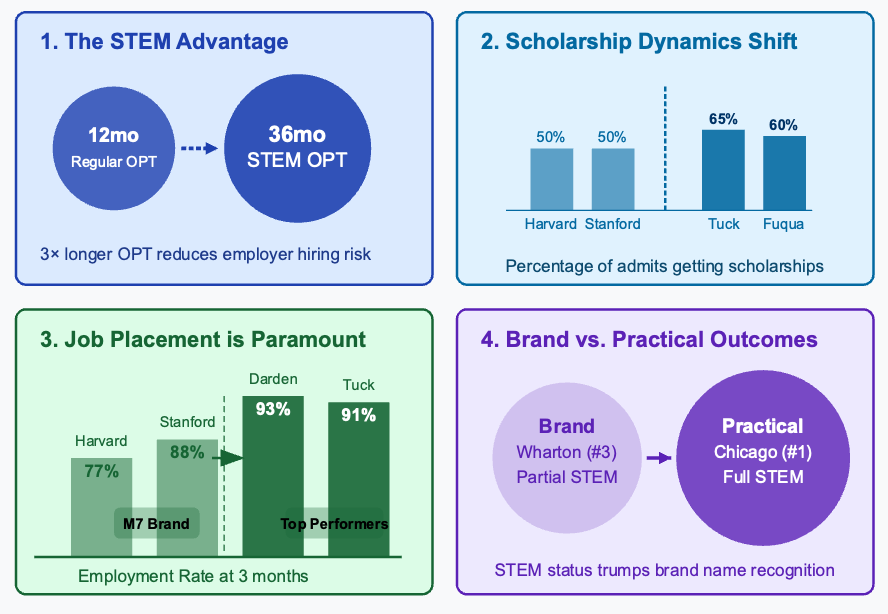
The STEM Advantage Is Non-Negotiable
The data is unequivocal: programs with full STEM designation deliver transformative advantages for Indian students. This isn’t merely about the additional 24 months of work authorization—though that’s valuable. What’s truly powerful is how this designation fundamentally changes employer perceptions of risk in hiring you. We’ve witnessed consulting firms and tech companies dramatically increase their hiring of international students when programs secured STEM status. When evaluating programs, consider this a threshold requirement unless you have exceptional circumstances (family business plans, unique visa situations, etc.).
Scholarship Dynamics Have Shifted
The scholarship landscape has evolved significantly since 2020. Previously predictable patterns (HBS/Stanford for need-based aid, Kellogg/Booth for merit) have been disrupted as programs compete for diverse talent. Schools like Yale SOM and Duke Fuqua now routinely outbid M7 schools for strong Indian candidates. Don’t assume historical scholarship patterns will hold—approach each school with fresh eyes.
Job Placement is Paramount
Programs with exceptional placement rates (Tuck at 91%, Wharton at 88%) score well regardless of other factors. Strong connections to consulting, tech, and finance – industries that frequently sponsor international employees – are particularly valuable.
Brand vs. Practical Outcomes
Some prestigious brands (like Harvard) rank lower in our tailored analysis due to practical considerations like STEM status. This doesn’t diminish their quality, but highlights the importance of looking beyond reputation to specific factors that matter for international students.
Schools to Watch Beyond the Top 10
These programs might offer excellent value for Indian applicants:
- Duke Fuqua – Strong consulting placement, collaborative culture, good scholarship potential
- Michigan Ross – Lower cost structure, growing STEM options, strong placement
- Cornell Johnson – Tech focus, NYC semester option, STEM pathways
- USC Marshall – STEM designation, strong West Coast placement, scholarships
- UT Austin McCombs – Emerging tech hub location, reasonable cost, scholarships
Strategic Recommendations for Indian Applicants
When Researching Schools:
- Connect with current Indian students at each school to understand their experience
- Scrutinize employment reports focusing on international student outcomes and visa sponsorship
- Engage with admissions and career services – ask direct questions about visa support and international scholarship options
Look Beyond Rankings:
- Consider program culture and teaching style that matches your preferences
- Evaluate location and industry connections relevant to your career goals
- Balance prestige with practical considerations like cost and STEM status
Financial Planning:
- Research international student loan options early (Prodigy, MPower)
- Consider a mix of higher and lower-cost programs in your application strategy
- Budget for living expenses, especially in high-cost cities like NYC or San Francisco
Visa Considerations:
- Prioritize full STEM-designated programs when possible
- Research schools’ track records placing international students with visa sponsors
- Consider industry choices that commonly sponsor international employees (consulting, tech)
Application Strategy:
- Apply to a mix of “dream” schools, “target” schools matching your profile, and “safety” schools where you might get larger scholarships
- Highlight in essays how you’ll leverage each school’s specific strengths for your career goals
- Be realistic about finances and have contingency plans
The Bottom Line
While US News MBA Rankings 2025 provide valuable information, this tailored analysis focuses specifically on the factors most critical for Indian MBA applicants. All top programs can lead to excellent outcomes, but your personal priorities, career goals, and financial situation should guide your final decision.
The most successful approach is to use these rankings as a starting point, conduct thorough personal research, and choose the program that best aligns with your unique circumstances and aspirations. With careful planning and the right program choice, a US MBA can be a transformative investment in your global career.
We encourage you to annotate our rankings as well as the US News MBA Rankings with your own personal factors as you narrow down your schools of interest. Happy planning!


